The Majestic Pileated Woodpecker: A Comprehensive Guide
Few birds command attention quite like the Pileated Woodpecker. With its striking plumage, powerful build, and distinctive drumming, this magnificent creature is a true icon of North American forests. This guide delves into the world of the Pileated Woodpecker, exploring its habitat, behavior, diet, reproduction, and ecological role. Whether you are a seasoned ornithologist, a curious nature enthusiast, or simply someone hoping to catch a glimpse of this amazing bird, this article provides a wealth of information.
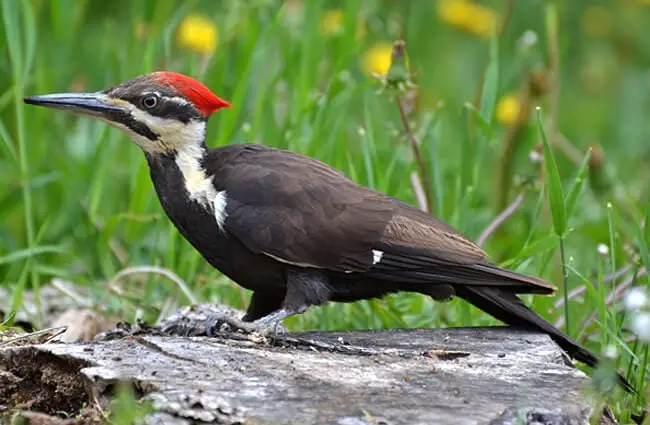
Basic Information & Identification
The Pileated Woodpecker, Dryocopus pileatus, is one of the largest woodpeckers in North America, typically measuring 16 to 19 inches in length with a wingspan reaching up to 30 inches. Its most recognizable feature is undoubtedly its bold coloration. Adults exhibit a striking combination of black and white plumage, with a prominent crimson crest that extends from the forehead to the nape of the neck. This crest is more pronounced in males, offering a subtle yet reliable indicator of sex. Juveniles have a paler crest and a mottled appearance, gradually gaining their adult coloration as they mature.
Pileated Woodpeckers are not silent birds. Their primary vocalization is a loud, resonant drumming produced by rapidly hammering their beak against tree trunks. This drumming serves multiple purposes, including territory defense, mate attraction, and communication. They also emit a variety of calls, ranging from a piercing double note to a whinnying sound, further enriching the soundscape of the forests they inhabit.
Habitat and Distribution
These remarkable birds are primarily found in mature forests across eastern North America, ranging from Canada to the southern United States. They prefer large tracts of woodland with abundant dead or decaying trees, which are essential for foraging and nesting. While they are most common in hardwood forests dominated by oak, beech, and maple, they can also thrive in coniferous forests, especially those with old-growth pines. Their territories typically span several dozen acres.
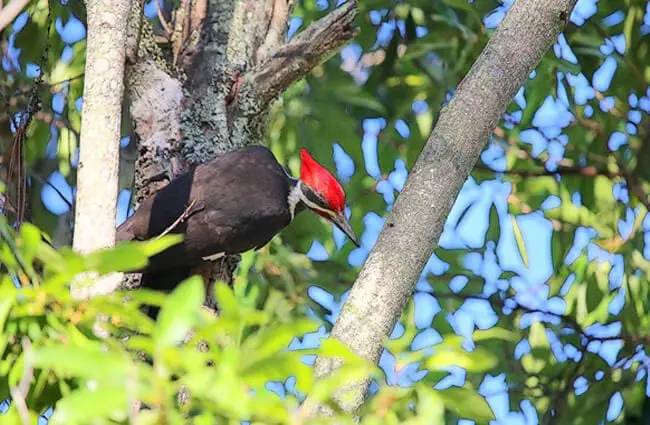
Finding Pileated Woodpeckers in the Wild
If you are hoping to spot a Pileated Woodpecker, focus your efforts on mature forests with ample standing deadwood. Look for large, rectangular excavations in tree trunks, often high above the ground. These “pileated holes” are telltale signs of their presence. Listen for their distinctive drumming, which can carry quite a distance through the forest. Early morning and late afternoon are often the most active times for foraging and drumming. Remember to maintain a respectful distance and avoid disturbing their habitat.
Diet and Foraging Behavior
Pileated Woodpeckers are primarily insectivores, with ants being a staple of their diet. Their menu is surprisingly diverse, including beetles, caterpillars, termites, and other wood‑boring insects. They are opportunistic feeders and will also consume fruits, nuts, and even sap. Their foraging technique is a sight to behold. They use their powerful bills to chisel away at tree bark, creating large rectangular excavations in search of hidden insects. This process not only provides them with sustenance but also creates valuable habitat for other wildlife.
Reproduction and Life Cycle
Pileated Woodpeckers are typically monogamous and form long‑term pair bonds. Breeding season begins in late winter or early spring. They excavate a large, oval‑shaped cavity in a dead or decaying tree trunk, often several feet above the ground. This cavity serves as both a nest and a roosting site. The female lays 2 to 5 eggs, which are incubated by both parents for approximately 18 to 20 days. The chicks are altricial, meaning they are born helpless and require extensive parental care. They fledge after about 28 to 30 days, but continue to rely on their parents for several weeks after leaving the nest.
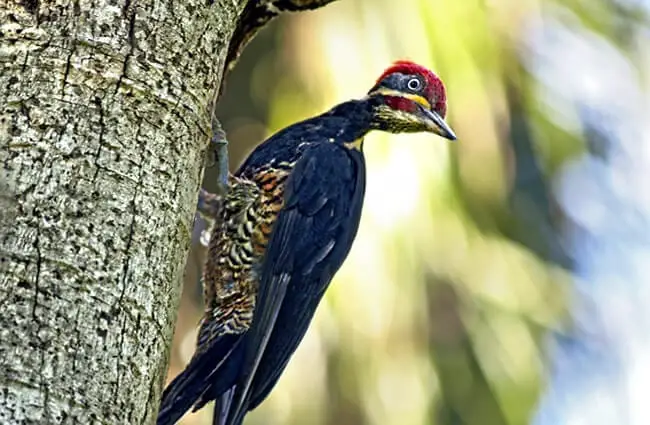
Ecological Role and Interactions
Pileated Woodpeckers play a vital role in forest ecosystems. Their foraging activities create cavities that are later used by a variety of other animals, including owls, ducks, squirrels, and various songbirds. This makes them a keystone species, meaning their presence has a disproportionately large impact on the structure and function of the ecosystem. They also help control insect populations, preventing outbreaks that could damage trees. They often co‑exist peacefully with other woodpecker species, although competition for foraging sites can occur. Occasionally, they may be preyed upon by birds of prey such as hawks and falcons, or by mammals like foxes and raccoons.
Pileated Woodpeckers and Humans
Historically, Pileated Woodpeckers were persecuted by humans who feared they would damage timber. However, their populations have rebounded in recent decades due to conservation efforts and a shift in attitudes. Today, they are a popular sight for birdwatchers and nature enthusiasts. Their drumming can sometimes be heard near human settlements, particularly in forested areas. While they may occasionally cause minor damage to wooden structures, they are generally not considered a significant pest. Providing suitable habitat, such as leaving standing dead trees in forests and parks, is the best way to support their populations.
Captive Care Considerations
Caring for Pileated Woodpeckers in captivity requires specialized knowledge and resources. They need a large, spacious enclosure that simulates their natural forest habitat. Providing a variety of tree limbs, branches, and foraging opportunities is essential. Their diet should consist of a variety of insects, fruits, nuts, and commercially available woodpecker food. Regular veterinary care is crucial to ensure their health and well-being. It is important to avoid overcrowding and provide ample opportunities for natural behaviors such as drumming and cavity excavation. They are highly intelligent birds and require mental stimulation to prevent boredom and stress.
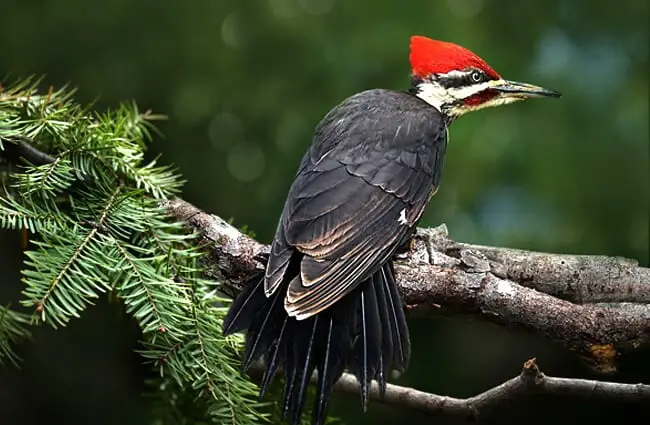
Interesting Facts
- The Pileated Woodpecker’s name comes from the Latin word “pileatus,” meaning “capped,” referring to its prominent crest.
- They can consume up to 10,000 ants per day.
- Their drumming can be heard up to half a mile away.
- The cavities they excavate can be used by other animals for decades.
- Juvenile Pileated Woodpeckers have a paler crest and a mottled appearance.
Evolutionary History
The evolutionary history of the Pileated Woodpecker is rooted in the broader lineage of woodpeckers, a group that originated in the early Tertiary period, roughly 55 to 65 million years ago. Fossil evidence suggests that early woodpeckers were arboreal insectivores that gradually developed the specialized adaptations that characterize the family today. The Pileated Woodpecker, as a member of the Dryocopus genus, likely diverged from other woodpecker lineages several million years ago, adapting to specific ecological niches within North American forests. Its large size and powerful bill are thought to be adaptations for accessing food resources unavailable to smaller woodpeckers.
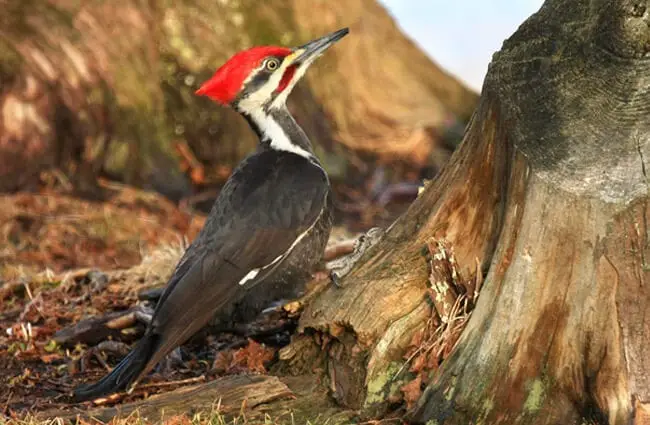
The Pileated Woodpecker stands as a testament to the power of adaptation and the intricate connections within forest ecosystems. Its striking appearance, powerful drumming, and ecological importance make it a truly remarkable bird, worthy of our admiration and conservation efforts.

![Red Angus Closeup of a beautiful Red Angus cowPhoto by: U.S. Department of Agriculture [pubic domain]https://creativecommons.org/licenses/by/2.0/](https://animals.net/wp-content/uploads/2020/03/Red-Angus-4-238x178.jpg)




![Red Angus Closeup of a beautiful Red Angus cowPhoto by: U.S. Department of Agriculture [pubic domain]https://creativecommons.org/licenses/by/2.0/](https://animals.net/wp-content/uploads/2020/03/Red-Angus-4-100x75.jpg)

